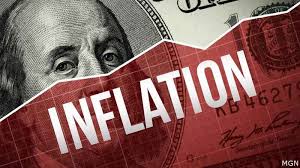MarketWatch
The numbers: The cost of goods and services rose 0.4% in April and inflation more broadly appears to have gotten stuck in the 4% to 5% range, complicating the Federal Reserve’s decision on whether to pause raising interest rates.
The increase in the personal consumption expenditures index was a tick higher than the Wall Street forecast. The PCE index is the Federal Reserve’s preferred inflation barometer.
The yearly increase in prices rose to 4.4% from 4.2% in the prior month, the government said Friday. Lower gasoline prices this year and slower increases in the cost of food have helped to bring the overall rate of inflation down.
Yet the core PCE index, which omits food and energy, suggests that the progress in reducing inflation may have stalled. It also rose 0.4% last month.
What’s more, the increase in the core rate of inflation over the past 12 months edged up to 4.7% from 4.6%. It’s been stuck near 5% since last fall.
The core PCE rate is viewed by the Fed as the best predictor of future inflation trends.
Big picture: The most recent inflation readings aren’t making it easy for senior Fed officials to decide what to do at their next big meeting in June.
Inflation is still far too high, they say, and it’s not coming down fast enough. The increases in the PCE indexes are likely to add to their worries.
The Fed might still decide to skip another rate increase in June to give itself more time to gauge the effects of past rate increases on the economy.
The central bank has raised a key short-term rate for 10 meetings in a row to a top end of 5.25% from near zero in the spring of 2022. Higher borrowing costs slow economic growth.
The Fed is also closely monitoring the U.S. banking system after a spate of failures in the spring raised questions about whether the turmoil would reduce lending. Less lending could have the effect on the economy of several rate hikes, some contend.
“If not considered appropriately, the Fed could tighten too much and needlessly raise the risk of a recession,” Fed Gov. Christopher Waller said earlier this week.
Looking ahead: “All attention will turn to the next set of employment and [consumer price index] reports to judge whether the Fed can afford to pause on June 14, but today’s report could well swing the pendulum back toward the hawkish contingent,” said senior U.S. economist Sal Guatieri of BMO Capital Markets.














